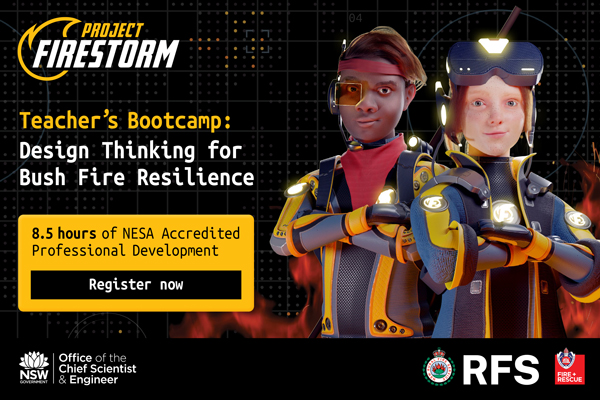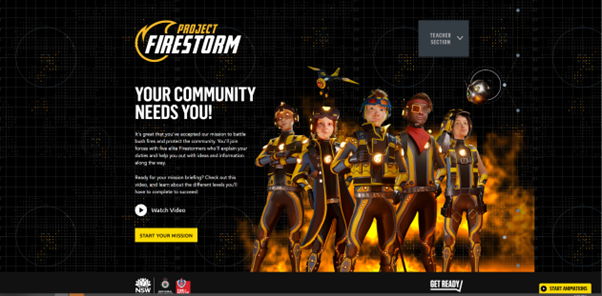Schools
The NSW Rural Fire Service recognises that children and young people can make substantial contributions to household and community resilience.
NSW RFS members across NSW are actively engaged with the children’s services and school communities in delivering key messages about bush fire safety; connecting with teachers and parents; providing guidance on emergency planning, and participating in emergency drills.
Allowing kids to explore real-life bush fire problems
In 2016, the NSW Department of Education introduced the study of bush fire into the syllabus for all Stage 3 (Years 5 and 6) students.
The syllabus states that students must study a contemporary bush fire event. They are also encouraged to use an inquiry-based approach to learning.
This is a great opportunity for children and young people to better understand the impacts of natural hazards and bush fire specifically and the NSW RFS is keen to support students and teachers in this study.
The NSW RFS has built an innovative website to support teachers and students in the study of bush fire.
Project Firestorm is designed to be used in Years 5 and 6 and encourage students to solve bush fire problems.
Professional Learning For Teachers
Project Firestorm is a complete curriculum unit that will empower your teachers to deliver ‘Factors that Shape Places - Bushfire Hazards’ within the NSW Geography syllabus. The Bootcamp gives teachers the knowledge and skills to successfully deliver Project Firestorm in their Stage 3 classrooms with support from RFS volunteers.
The RFS will facilitate the NESA-accredited 8.5 hour professional development Teacher’s Bootcamp in Term Two 2024.
Teachers can register for the Blue Mountains workshop in April 2024 or simply express their interest and the RFS will look into hosting a workshop in your area.
Check out Project Firestorm and the NSW Department of Education’s Project Firestorm unit plan.
Register for the Blue Mountains or Hunter events here.
You may also express your interest on this form and we may be able to host a Bootcamp in your area.
Further questions? Email us at community.engagement@rfs.nsw.gov.au.

A pilot in inquiry-based learning
The St Ives North Public School in northern suburbs of Sydney, introduced the study of bush fire in 2016 and called upon the NSW RFS as content experts throughout their study. This is an example of excellent collaboration between a school and the NSW RFS. The following four minute video features the students, teachers and firefighters involved.
We had massive Ideas: Students finding solutions to bush fire problems




